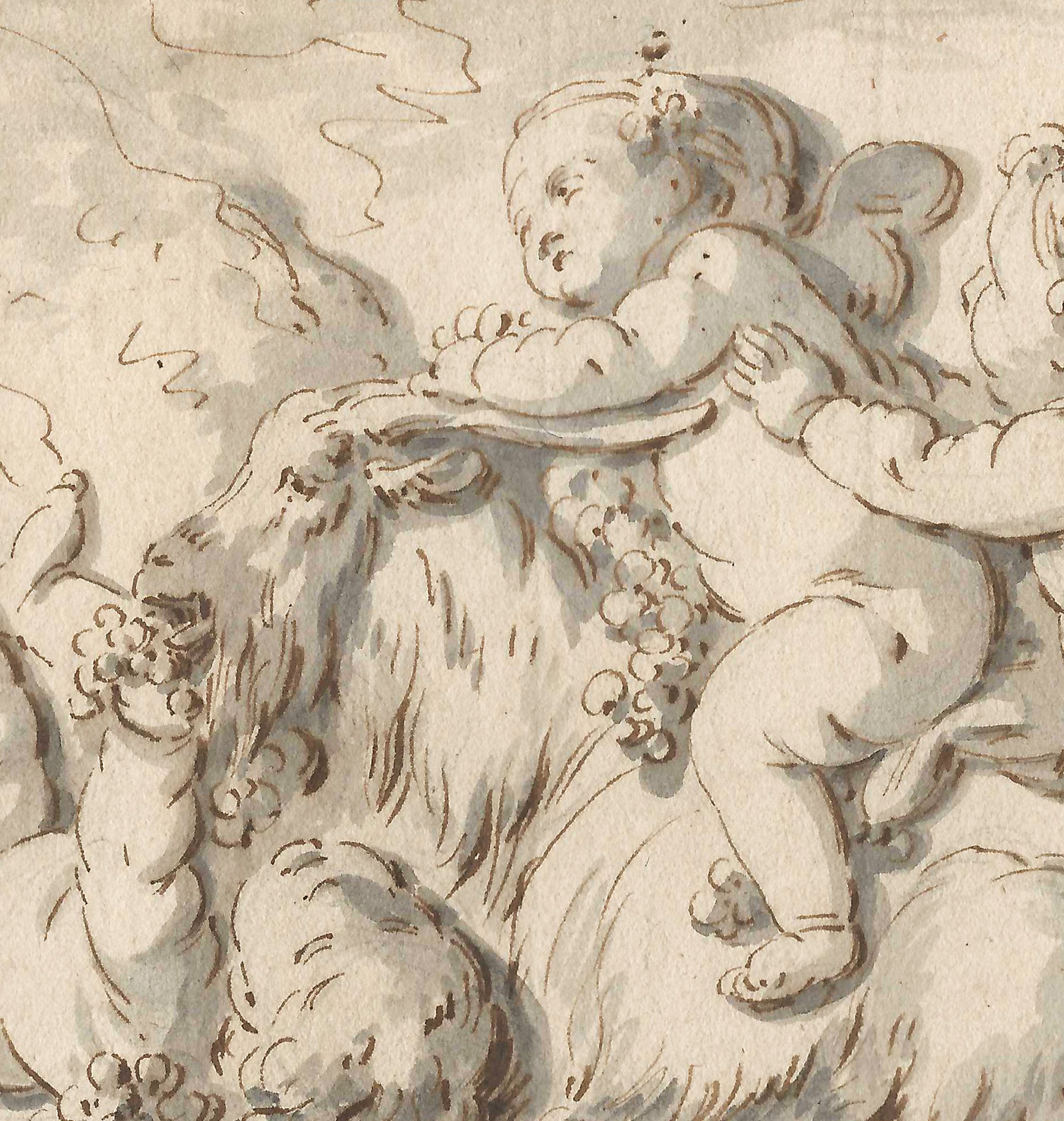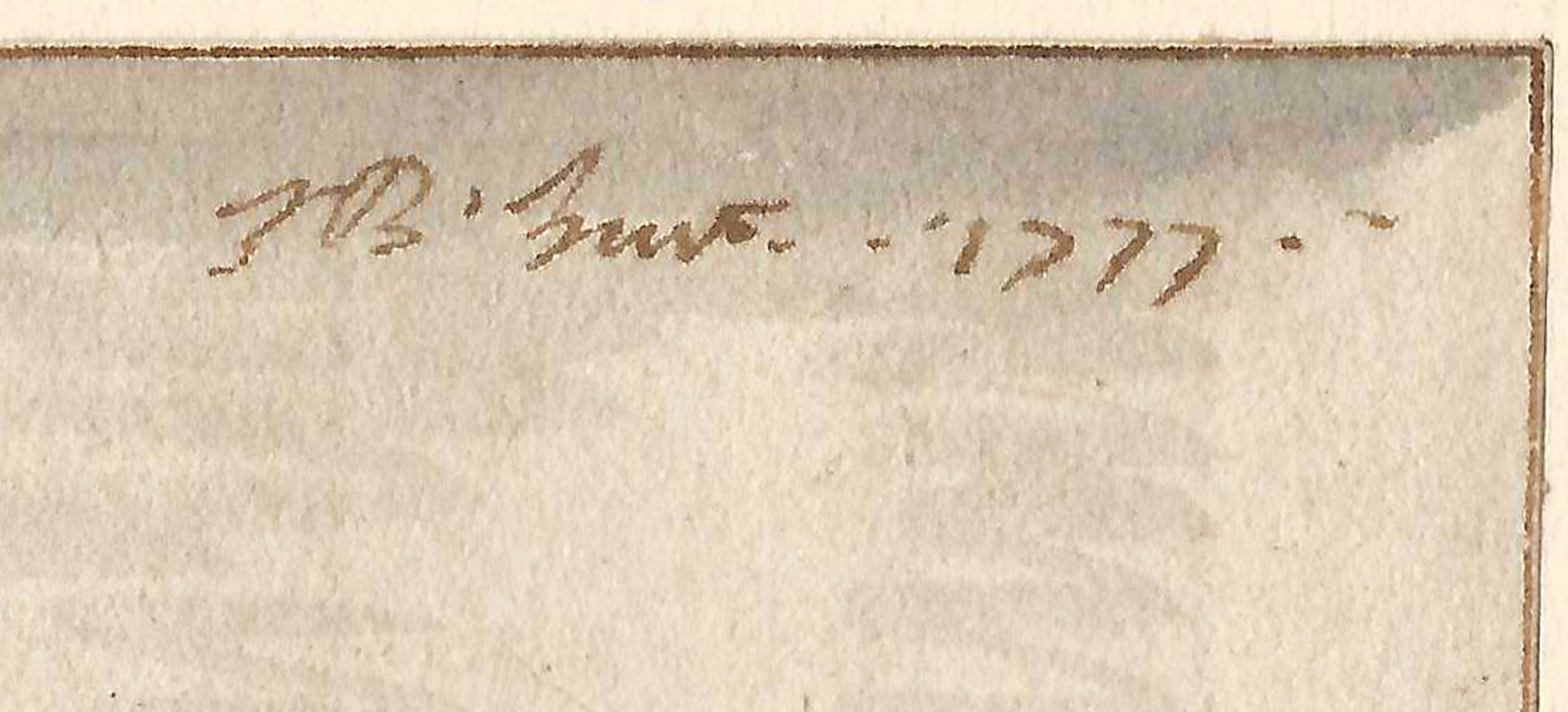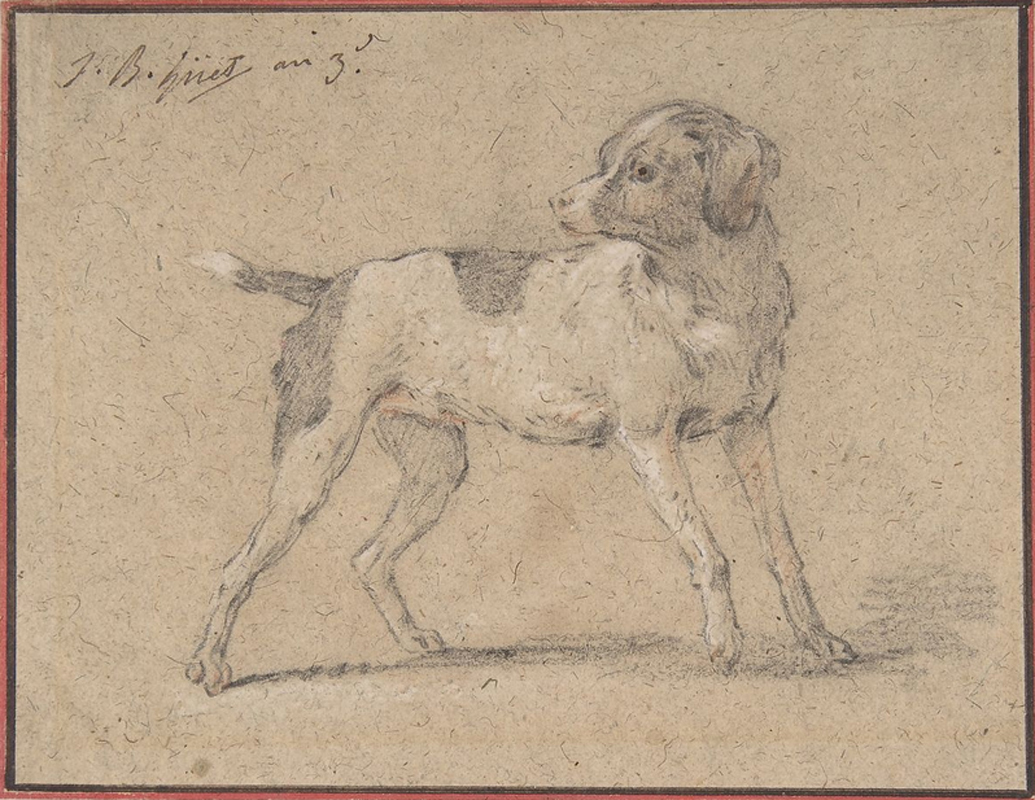JEAN-BAPTISTE HUET I (Paris 1745 – 1811 Paris)
Jean-Baptiste Huet I (Paris 1745 – 1811 Paris)
Putti and a Young Satyr Playing with a Goat
Pen and brown ink, grey wash, remains of brown chalk, brown ink framing lines, 116 x 172 mm (4.6 x 6.8 inch)
Signed and dated ‘JB Huet. 1777.’ (brown ink, upper right)
Provenance
Private collection, Germany, until 2019
***
Jean-Baptiste Huet was one of the last “King’s painters” of pre-Revolutionary France, excelling in pastoral scenes and sympathetic depictions of the animal world.1 Born in 1745 as the son of the animal painter Nicolas Huet I (1718–1780), he descended from a family of artists who had a considerable influence on his early career. He apprenticed with the celebrated animal painter Charles Dagomer, and in 1764 he entered the studio of Jean-Baptiste Le Prince, a former student of the renowned François Boucher. Subject to such influences, Huet went on to develop a style which was both naturalistic and elegant.
In 1769 he was admitted to the Académie Royale and continued to exhibit his work regularly at the Paris Salon up until 1789. It was during the later years of his career when he was invited by Christophe-Philippe Oberkampf, founder of the royal manufacture of Jouy-en-Josas, to produce designs for printed textile patterns. We know little more about the artist than this simple biography; Huet’s obscurity has been preserved because he deliberately gave up public orders in favour of private commissions, and his account archives are few and far between. In December 1770 Huet, together with Jean-Honoré Fragonard, received the prestigious commission to produce paintings for Louis XV’s dining room at Versailles, but the scheme was never completed.2 Jean-Baptiste Huet’s fame was greatly increased by a recent exhibition in the Cognacq-Jay Museum in Paris.3
This fine drawing by Huet is beautifully preserved perfectly illustrates the playful nature of Rococo art. The assuredly drawn Putti, together with a young Satyr, are playing with a friendly goat, surrounded by branches of grapes, and the scene is reminiscent of works by François Boucher and Fragonard. A drawing by Huet also showing his characteristic shorthand signature is preserved in the Metropolitan Museum in New York (fig.).4
SOLD
1. For the artist, see: L. Demathieu, ‘Les “Oeuvres de J.B. Huët” (1795-1799): un recueil d'estampes méconnu’, Les Cahiers d'Histoir de l'Art (2008), no. 6, pp. 104-11 and Saur Allgemeines Künstlerlexikon: die bildenden Künstler aller Zeiten und Völker, Munich 1992- , vol. 75, p. 374.
2. Perrin Stein a.o., Fragonard: Drawing Triumphant, exh. cat. New York (The Metropolitan Museum of Art), 2016, p. XVIII.
3. Jean-Baptiste Huet. The Pleasure of Nature, curated by Benjamin Couilleaux, 2016.
4. Graphite, white and orange chalk, 123 x 159 mm, inv. no. 64.244; Jacob Bean and Lawrence Turčić, 15th-18th Century French Drawings in The Metropolitan Museum of Art, exh. cat. New York (The Metropolitan Museum of Art), 1986, cat. no. 134, p. 126, repr.




